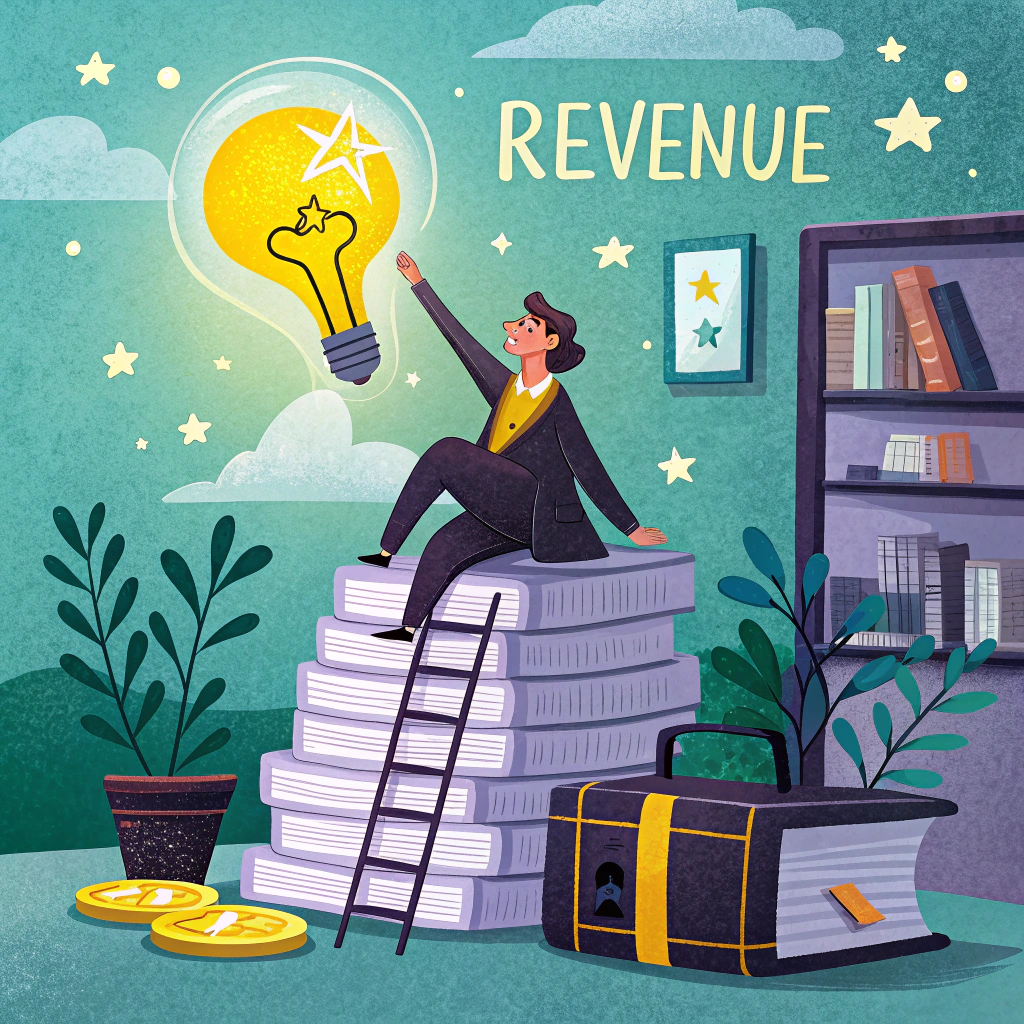So, you’re using the accrual accounting method, huh? High five! But wait, that means it’s time for some year-end financial housekeeping. Yep, we’re talking about those mysterious year-end adjusting entries to your profit & loss statement and balance sheet. Think of it as giving your financials a little makeover to reflect your business’s true financial glow-up. The usual suspects? Accruals, deferrals, and those sneaky non-cash expenses. In this article, we’ll dive into the world of year-end adjusting entries, complete with examples that’ll make you the star of your next accounting meeting.
Year-End Adjusting Entry Explained

Alright, let’s get down to brass tacks: What exactly is a year-end adjusting entry? Think of it as the final touch-up on your financial masterpiece. It’s a journal entry made to a general ledger account at the end of the fiscal year to make sure your revenue and expenses are matched and recognized when they actually occur. This keeps everything in line with the matching principle and GAAP for revenue recognition. It’s like making sure all your ducks (or dollars) are in a row before the clock strikes midnight.
Now, here’s the scoop: The number of year-end adjustments you’ll need depends on how meticulous you’ve been with your financial records throughout the year. If you’re one of those people who alphabetizes your spice rack, you’re probably in good shape. But if your bookkeeping resembles a toddler’s finger painting, well, we’ve got some work to do. Skipping these adjustments could make your financial statements look like a fairy tale—overstated net income and owner’s equity, with expenses and liabilities playing hide-and-seek. Not exactly investor-friendly.
Typically, the big three types of year-end adjustments are accruals, deferrals, and non-cash expenses. But wait, there’s more! Sometimes, you’ll have to reclassify transactions from one account to another—like realizing you put the cereal in the fridge and the milk in the pantry. And if your friendly auditors find errors, they might request additional adjustments. It’s all part of keeping your financial house in order.
For example, you might need to reclassify a portion of long-term debt as short-term debt when it’s due within the next year. It’s like acknowledging that your gym membership fee is coming up sooner than you’d like. And if auditors discover your ending inventory is overstated by $20,000 (whoops!), they’ll politely insist on a year-end adjustment to set things straight.
Types of Year-End Adjustments
- Accrual adjustments
- Deferred adjustments
- Non-cash expenses
You might be wondering, when do you need to make these adjustments? Adjusting entries are recorded for specific kinds of business transactions. They usually fall into three main categories: accruals, deferrals, and non-cash expenses. Consider them the holy trinity of accounting adjustments.
Accrual Adjustments
First up, accrual adjustments. These include the adjusting entry for accrued revenues and the adjusting entry for accrued expenses. So what’s the scoop on accrued revenues? It’s when you’ve earned revenue but haven’t invoiced the customer yet. Think of it as doing the work but not yet sending the bill—yet you still need to recognize that revenue. Examples include interest revenue and services you’ve completed but haven’t billed for. It’s like mowing your neighbor’s lawn, knowing they’ll pay you eventually (hopefully before the grass grows back).
On the flip side, accrued expenses are costs you’ve incurred but haven’t been billed for yet. Kind of like when you know your utility bill is coming but it hasn’t arrived in the mail. Common examples include interest payments on loans, taxes (everyone’s favorite), and warranties on products or services you’ve received. Don’t forget expenses like wages, employee commissions, and bonuses—your team worked hard, and their pay needs to be accounted for, even if the cash hasn’t left your account yet.

Year-End Adjusting Entry for Accrued Revenue:
So, how do you handle accrued revenues at year-end? Your trusty accountant (or you, wearing multiple hats) will recognize unbilled revenues by debiting Accounts Receivable on the balance sheet and crediting the Revenue account on the income statement. It’s like acknowledging that while the cash isn’t in your pocket yet, you’ve earned it fair and square. Then, when the customer finally pays up in the next fiscal year, you adjust the accounts by debiting Cash and crediting Accounts Receivable. Cha-ching!
| Account | Debit | Credit |
|---|---|---|
| Accounts Receivable | 00 | |
| Revenue | 00 |
Year-End Adjusting Entry for Accrued Expenses:
When it comes to accrued expenses, you record these unbilled costs as a liability on the balance sheet. It’s like jotting down an IOU to remind you of what’s owed. You’ll debit the Expense account (increasing your expenses) and credit the Accrued Expenses account (increasing your liabilities). Then, when you actually pay the expense, you’ll debit the Accrued Expenses account (decreasing liabilities) and credit Cash (decreasing your assets). It’s the circle of accounting life.
| Account | Debit | Credit |
|---|---|---|
| Expenses | 00 | |
| Accrued Expenses | 00 |
Deferred Adjustments
Next up, deferred adjustments. These include adjusting entries for deferred revenues and prepaid expenses. Deferred revenues, also known as unearned revenue, occur when a customer pays you in advance for a product or service. You’ve got the cash, but you haven’t earned it yet. Think yearly subscriptions, rent payments received upfront, or airline tickets. It’s like getting paid to DJ a party next month—you’ve got the money, but the dance floor is still empty.
On the other hand, prepaid expenses happen when you pay in advance for goods or services. This payment is treated as an asset because it represents future benefits. Examples include prepaid rent, prepaid utilities, or prepaid insurance. It’s like pre-ordering the latest gadget—you’ve paid now, but you’ll get to enjoy it later.
Year-End Adjusting Entry for Deferred Revenue:
When you receive an advance payment, you’ll record it as a liability in the Deffered Revenue account because you still owe the customer the product or service. Debit Cash (because money just rolled in—woohoo!) and credit Unearned Revenue. As you fulfill your obligation over time, you’ll make adjusting entries to debit Unearned Revenue (decreasing your liability) and credit Revenue (recognizing the income). It’s like delivering those DJ beats and finally earning that advance payment.
| Account | Debit | Credit |
|---|---|---|
| Unearned Revenue | 00 | |
| Revenue | 00 |
Year-End Adjusting Entry for Prepaid Expenses:
For prepaid expenses, you initially record the payment as an asset. Debit the Prepaid Expense account and credit Cash. Over time, as you “use up” the prepaid item, you’ll make adjusting entries to debit the appropriate Expense account (like rent or insurance expense) and credit the Prepaid Expense account. It’s like finally binge-watching that streaming service you paid for a year ago—time to get your money’s worth.
| Account | Debit | Credit |
|---|---|---|
| Expense | 00 | |
| Prepaid Expense | 00 |
Non-Cash Expenses
Last but not least, non-cash expenses—think depreciation, amortization, and allowance for doubtful accounts. These expenses don’t involve an immediate cash outlay but reflect the consumption or loss of value over time. Some smaller businesses may not record these monthly and opt to adjust them at year-end. It’s like only checking your car’s mileage once a year—you know it’s depreciating, but you only note it when you have to.
Year-End Adjusting Entry for Depreciation:
Depreciation expense accounts for the loss in value of a fixed asset over time—like vehicles, equipment, or buildings. Each time you record depreciation, it’s reflected as an expense on your income statement. The corresponding accumulated depreciation is a contra-asset account on your balance sheet. At year-end, you’ll debit Depreciation Expense and credit Accumulated Depreciation. It’s acknowledging that your trusty delivery van isn’t as shiny as it used to be.
| Account | Debit | Credit |
|---|---|---|
| Depreciation Expense | 00 | |
| Accumulated Depreciation | 00 |
Year-End Adjusting Entry for Amortization:
Amortization is similar to depreciation but applies to intangible assets like patents, copyrights, and trademarks. You’re spreading the cost of these assets over their useful life. At year-end, you’ll debit Amortization Expense and credit Accumulated Amortization. It’s like recognizing that your brilliant idea has a shelf life.
| Account | Debit | Credit |
|---|---|---|
| Amortization Expense | 00 | |
| Accumulated Amortization | 00 |

Year-End Adjusting Entry for Allowance for Doubtful Accounts:
Let’s face it, sometimes customers don’t pay up. The allowance for doubtful accounts lets you anticipate and account for these potential losses. You’ll debit Bad Debt Expense and credit Allowance for Doubtful Accounts. It’s like setting aside a rainy-day fund for when things don’t go as planned.
| Account | Debit | Credit |
|---|---|---|
| Bad Debt Expense | 00 | |
| Allowance for Doubtful Accounts | 00 |
